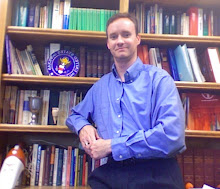Please Don't Phase out Mac Automation
Worried that Apple eliminated the Product Manager of Automation Technologies. I need Applescript for my academic work. Is all ok? #AskApple
All things Apple technology for biblical scholarship and ministry. Providing help and ideas for bible scholars and ministers using Apple computers and devices as a tool for doing their work. Also includes discussion of NT Synoptic Gospel studies.
Worried that Apple eliminated the Product Manager of Automation Technologies. I need Applescript for my academic work. Is all ok? #AskApple
It turns out that the "Insert Verses" Accordance Service breaks when highlighting a verse reference that begins the line of a List formatted paragraph in a Microsoft Word document.
I was talking with someone today about how you might grab a text reference from Accordance without leaving the command line in Terminal. So, I thought I'd share one way to accomplish it.
tell app "Accordance" to get «event AccdTxRf» {"NRSVS", "John 1:1", true}
osascript -e 'tell app "Accordance" to get «event AccdTxRf» {"NRSVS", "John 1:1", true}'
chmod +x getverse.sh
./getverse.sh John 11:35
alias gv=./getverse.sh
source ~/.bash_profile
Tesla is the high-end electric car company, headed by an eccentric and high-profile CEO, that makes the incredible electric car that so many want but so few can afford. This has earned them the moniker "the Apple of Automobiles".
Tesla made big news today for revealing the design of their Model 3, which is still in production, but will start at $35,000. In just a day, 115,000 people have reserved their car, all based on the dramatic release of this one photo. Just take a look at the design photo they released, and you can see what has so many people excited:
 |
| Tesla Model 3 |
A friend asked about a script to copy selected text and paste it into Word in a specified font face. My mind explodes with all the different ways, technologies one could do this with—Applescript, Automator, VBA within Word, and launcher/macro programs like KeyboardMaestro and Quicksilver.
Let's say you found the relevant text or from a PDF or website or in Accordance and you want to copy and paste it into your Word document, but you want to specify the font because it's a different language than your other normal text.*
I'd like to illuminate one little trick I learned some time ago that can be incorporated into several of those. Namely, you can use the command line textual tool to markup the text with the much-maligned HTML tag and then copy it to the clipboard converting the HTML text to styled text. The syntax for the line is:
echo '<i>I am some italicized text</i>' | textutil -format html -convert rtf -stdin -stdout | pbcopy -Prefer rtf
I normally would wrap that into a script which grabs the text and then pastes it wherever I want it. Here's an example of a script, which copies the selected text in the front app, then reads the clipboard into variable, adds a tag to the text of the variable, then copies that newly-styled text back onto the clipboard, and then brings Word to the front, and pastes the directly formatted text.
